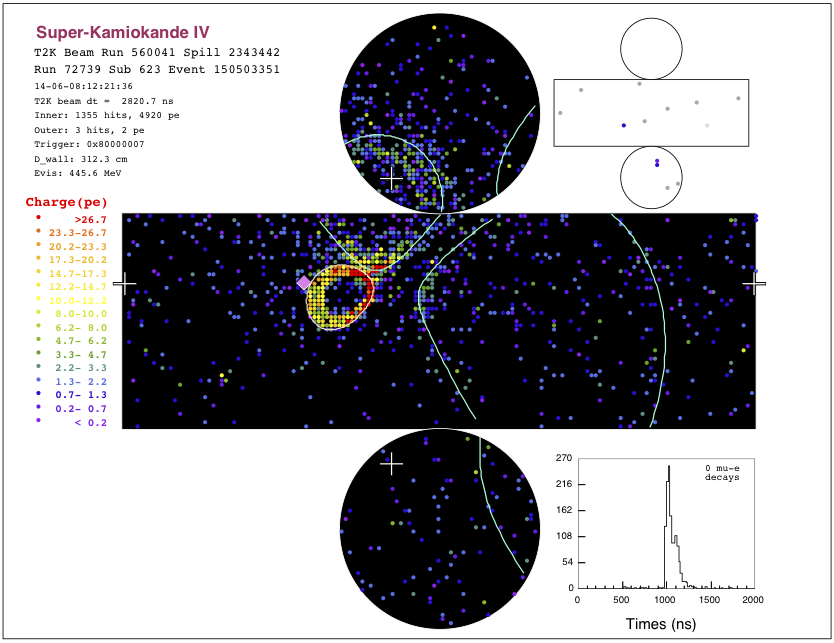T2K resumed data taking on 26 May 2014 after a 1-year shutdown caused by the hadron hall radiation accident. Many thanks are due to the J-PARC directorate and the staff members for their incredible effort over many months to make this possible! During the beamline commissioning, the first antineutrino beam at J-PARC (and the first ever antineutrino beam in Japan) was delivered by the T2K beamline. In addition, on 8 June 2014, the first fully contained event was found in Super-Kamiokande, the T2K far detector, while the T2K beamline was running in antineutrino mode (please see the event display below):

First event in Super-Kamiokande in antineutrino beam mode
T2K makes its beam by colliding a beam of protons with a graphite target. Pions are created by these collisions, and these pions can have either a positive or a negative charge. The pions pass through 3 magnetic horns, and their motion is deflected by the magnetic field. By changing the direction of the current in the magnetic horns, it is possible to focus either positively charged pions or negatively charged pions toward the direction of Super-Kamiokande, the T2K far detector. Positively charged pions quickly decay to muon neutrinos and antimuons, while negatively charged pions decay to muon antineutrinos and muons. This means that T2K can choose whether its beam is composed mostly of muon neutrinos or mostly of muon antineutrinos by changing the direction of the magnetic horn current (the muons or antimuons and any remaining pions are stopped by a second layer of graphite at ~100m downstream of the target).
By comparing oscillations of antineutrinos with oscillations of neutrinos, it might be possible to find a clue to one of the most profound mysteries in science: why does the Universe appear to be composed entirely of matter when it is believed that equal quantities of matter and antimatter were created in the Big Bang? Differences between the oscillations of neutrinos and antineutrinos could provide the answer to this, and, if they exist, these differences would be an example of CP violation. This successful start of the antineutrino mode data taking marks the beginning of our journey to probe CP violation in the lepton sector.
Another aim of taking data in antineutrino beam mode is to make measurements of the interaction cross sections of muon antineutrinos.



